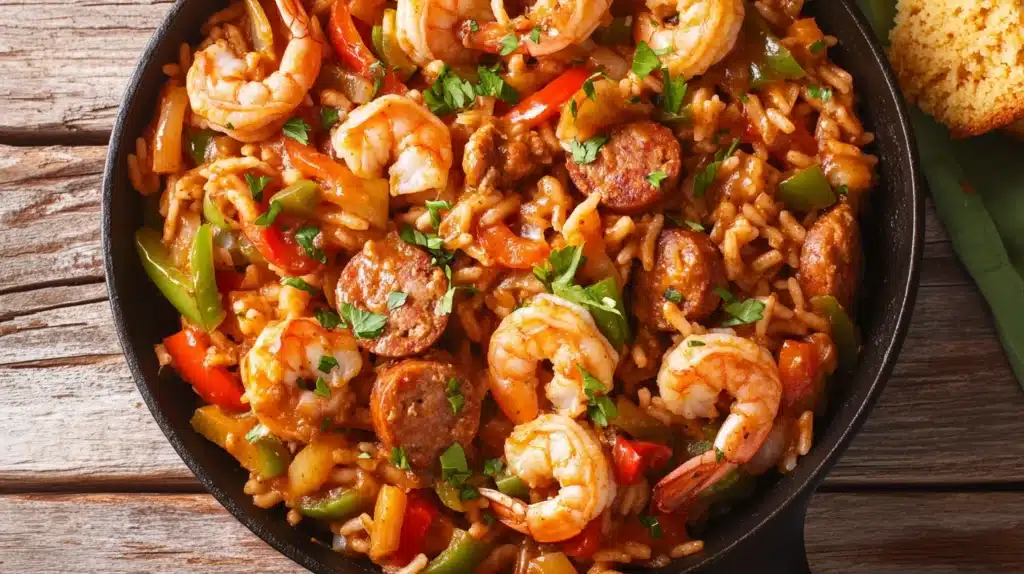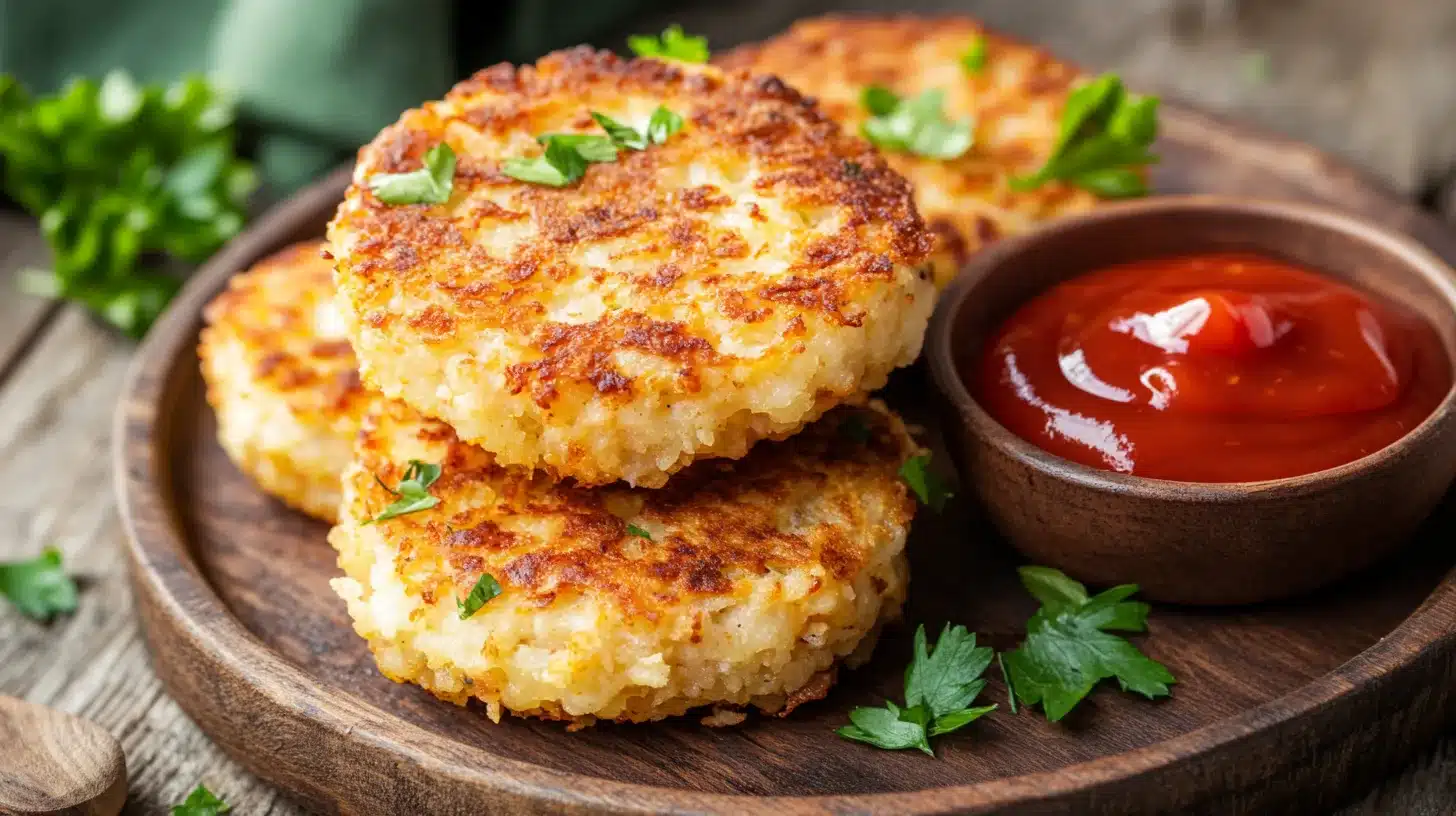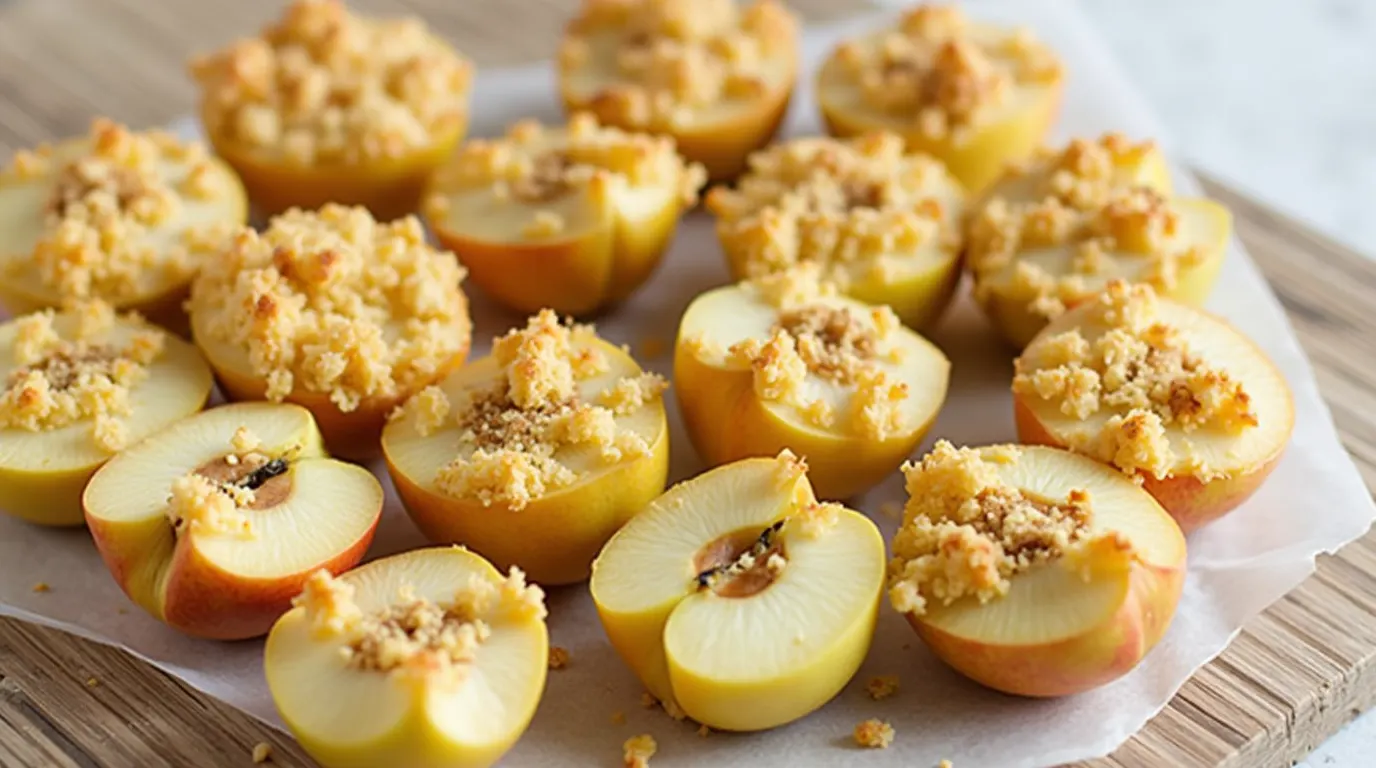Pastalaya Recipe: A Simple 3-Step Cajun Pasta Dish for Busy Nights

Looking for a delicious, crowd-pleasing dinner that doesn’t require hours in the kitchen? Pastalaya might be your new go-to weeknight solution. This hearty one-pot meal combines the best of two beloved dishes—pasta and jambalaya—creating a comforting fusion that’s as versatile as it is satisfying. Perfect for busy families, meal prep enthusiasts, or anyone craving a flavorful dinner without the fuss, this 3-step recipe will revolutionize your weeknight routine.
Table of Contents
Introduction to Pastalaya: A Comforting Fusion Dish
What is Pastalaya?
Pastalaya represents the beautiful marriage of Italian pasta and Creole jambalaya, bringing together two culinary traditions in one delightful dish. Unlike traditional jambalaya that uses rice as its base, pastalaya substitutes pasta—typically penne, rotini, or fettuccine—creating a hearty, satisfying meal that carries all the bold flavors of Louisiana cooking with the comforting familiarity of pasta.
This clever fusion emerged from the rich culinary landscape of Louisiana, where Creole and Cajun cooking have long embraced adaptation and innovation. Much like its rice-based cousin, pastalaya originated as a practical solution for feeding large gatherings, particularly during community events, family reunions, and festive celebrations throughout the South. The dish maintains jambalaya’s signature “holy trinity” of vegetables (bell peppers, onions, and celery) and characteristic Cajun seasoning while introducing the universal appeal of pasta.
In Southern Louisiana, particularly, pastalaya has earned its place at crawfish boils, church functions, and tailgating parties—anywhere that calls for a crowd-pleasing, easy-to-serve dish that keeps everyone coming back for seconds. Its popularity has spread beyond the South in recent years, charming home cooks nationwide with its approachable ingredients and irresistible flavor profile.
Why Choose Pastalaya for Dinner?
When the workweek demands efficiency without sacrificing satisfaction, pastalaya delivers on all fronts. This one-pot wonder typically comes together in 30 minutes or less, making it perfect for those evenings when time feels particularly scarce. The streamlined cooking process eliminates the need for multiple pots and pans, significantly reducing cleanup time and kitchen chaos.
What truly sets pastalaya apart is its remarkable adaptability. The basic framework accommodates countless variations, allowing you to work with ingredients already in your pantry or refrigerator. Have leftover chicken from yesterday’s dinner? Toss it in. Need to use up that bell pepper before it goes bad? Perfect addition. This flexibility makes pastalaya an ideal solution for reducing food waste while still creating a meal that feels intentional rather than improvised.
The dish also scales beautifully, working equally well for a quiet dinner for two or a last-minute gathering with friends. Its hearty nature means even small portions satisfy, though the inevitable requests for seconds might make you wish you’d made a double batch.

Key Ingredients Needed
To create a classic pastalaya, you’ll need:
For the Base:
- 12-16 oz pasta (penne, rotini, or fettuccine work well)
- 1 pound protein (traditionally andouille sausage, chicken thighs, or shrimp—or a combination)
- 1 large onion, diced
- 1 green bell pepper, diced
- 2-3 celery stalks, diced
- 3-4 garlic cloves, minced
- 1 can (14.5 oz) diced tomatoes
- 4 cups chicken or vegetable broth
Seasonings:
- 2 tablespoons Cajun or Creole seasoning
- 1 teaspoon dried thyme
- 2 bay leaves
- Hot sauce to taste
- Salt and pepper to taste
Optional Garnishes:
- Chopped green onions
- Fresh parsley
- Grated Parmesan cheese
The beauty of pastalaya lies in its forgiving nature regarding substitutions. For dietary accommodations, consider these alternatives:
- Gluten-free: Use your favorite gluten-free pasta, though you may need to adjust cooking time slightly.
- Low-carb: Try protein-enriched pasta or even zucchini noodles added just before serving.
- Vegetarian/vegan: Replace animal proteins with plant-based sausage, beans, mushrooms, or extra firm tofu. Substitute vegetable broth for chicken broth.
- Lower sodium: Use reduced-sodium broth and control added salt by making your own Cajun seasoning blend.
With these ingredients gathered, you’re ready to embark on your pastalaya journey—a three-step process that transforms simple components into a meal worth remembering.
Step-by-Step Guide to Making Pastalaya
Step 1: Prepare Your Ingredients
The secret to a stress-free cooking experience starts with proper preparation. Before heating your pot, take 10-15 minutes to organize everything you’ll need:
First, chop all vegetables to roughly the same size to ensure even cooking. Aim for a ¼-inch dice for the “holy trinity” of onions, bell peppers, and celery. This uniform size helps these aromatics release their flavors at the same rate, creating a harmonious base for your pastalaya. Mince garlic separately, as it will be added later to prevent burning.
For proteins, preparation varies by type:
- Chicken: Cut boneless, skinless thighs or breasts into 1-inch pieces for quick, even cooking.
- Sausage: Slice andouille, smoked, or Italian sausage into ½-inch rounds or half-moons.
- Shrimp: Peel and devein if necessary, keeping tails on for extra flavor if desired.
- Mixed approach: Consider browning sausage first, then adding chicken, reserving shrimp to add in the final minutes of cooking.
Measure all spices into a small bowl to create what professional chefs call a “mise en place” (everything in its place). This simple step prevents the frantic search for ingredients once cooking begins and helps ensure nothing gets forgotten in the process.
Pro tip: If using a protein that requires longer cooking (like chicken), consider pre-cooking it partially to ensure food safety while preventing pasta from overcooking later.
Step 2: Cooking the Base
With everything prepared, it’s time to build the flavorful foundation of your pastalaya:
- Heat 1-2 tablespoons of oil (olive or vegetable) in a large, heavy-bottomed pot or Dutch oven over medium-high heat.
- If using sausage, add it first and brown for 3-4 minutes, allowing its fat and flavor to render out. Remove and set aside, leaving the flavorful drippings behind.
- Add chicken pieces (if using) to the pot and cook until just browned on the outside but not fully cooked through, about 4-5 minutes. Remove and set aside with the sausage.
- In the same pot with accumulated flavors, add the holy trinity—onions, bell peppers, and celery. Sauté for 5-6 minutes until vegetables have softened and onions become translucent.
- Add minced garlic and cook for another 30-60 seconds until fragrant, being careful not to let it burn.
- Sprinkle in Cajun seasoning, dried thyme, and a pinch of salt and pepper, stirring to coat the vegetables evenly. Let the spices toast for about 30 seconds to awaken their flavors.
- Pour in diced tomatoes with their juice, stirring to scrape up any browned bits from the bottom of the pot—this is pure flavor!
- Add chicken or vegetable broth and bay leaves, then return the browned meats to the pot (except shrimp, which will be added later). Bring the mixture to a gentle boil.
At this point, your kitchen should be filled with aromatic promise—the foundation of your pastalaya is complete and ready for its star ingredient.
Step 3: Adding the Pasta
This final step transforms your flavorful base into a cohesive, satisfying meal:
- Once your liquid is boiling, add dry pasta directly to the pot. Stir immediately to prevent sticking, ensuring all pasta is submerged.
- Reduce heat to medium-low to maintain a gentle simmer. Cover partially with a lid, allowing some steam to escape.
- Cook, stirring occasionally, for about 8-10 minutes (or according to package directions minus 2 minutes for al dente texture). The pasta will absorb the flavorful liquid as it cooks, thickening the dish naturally.
- If using shrimp, add it when pasta is about 3 minutes from being done. The residual heat will cook the shrimp perfectly without making them tough.
- Check pasta for doneness by tasting a piece—it should offer slight resistance when bitten (al dente) as it will continue cooking slightly even after removed from heat.
- If the mixture becomes too dry before pasta is cooked, add ¼ cup additional broth or water. Conversely, if too soupy, simmer uncovered for a few extra minutes.
- Remove from heat and let stand for 5 minutes before serving. This brief rest allows flavors to meld and sauce to reach the perfect consistency.
- Remove bay leaves, add hot sauce to taste, and adjust salt and pepper if needed.
Pastalaya is typically served in bowls, garnished with chopped green onions, fresh parsley, and perhaps a light sprinkle of grated Parmesan cheese for an Italian nod to this Creole-inspired dish.

Customizing Your Pastalaya
Vegetarian and Vegan Variations
Creating a meatless pastalaya doesn’t mean sacrificing the dish’s signature robust flavor. Consider these plant-based approaches:
For protein substitutes, plant-based sausage products work remarkably well, absorbing the traditional Cajun spices just as their meat counterparts would. Alternatively, firm vegetables with meaty textures make excellent additions: portobello mushrooms sliced into strips, cubed eggplant pre-salted to remove bitterness, or bite-sized pieces of firm tofu previously pressed and briefly marinated in soy sauce and smoked paprika.
Red or kidney beans offer additional protein while honoring the dish’s Louisiana roots, where beans frequently appear in Creole cooking. For enhanced umami—that savory quality often associated with meat—consider adding:
- 1-2 tablespoons soy sauce or tamari
- 1 teaspoon smoked paprika (to mimic andouille’s distinctive smokiness)
- 2 tablespoons nutritional yeast in the broth
- 1 tablespoon tomato paste, briefly caramelized with the vegetables
Amplify the vegetable presence by incorporating fire-roasted corn kernels, diced zucchini, or sliced okra—all vegetables with Southern culinary connections that complement pastalaya’s flavor profile.
For vegan preparations, simply ensure your pasta contains no egg and consider finishing the dish with a drizzle of good olive oil in place of traditional butter or cheese garnishes.
Spice Level Adjustments
Pastalaya’s heritage in Louisiana cuisine means spice traditionally plays a prominent role, but heat level should always accommodate your personal preference:
For those who prefer milder flavors, reduce the Cajun seasoning to 1 tablespoon and rinse diced tomatoes to remove some acidity. Balance heat with:
- 1 tablespoon brown sugar or honey to counteract spiciness
- A splash of cream or coconut milk added at the end
- Extra bell peppers for sweetness that tempers heat
To increase the dish’s intensity for spice enthusiasts:
- Add fresh minced jalapeño or serrano peppers with the holy trinity
- Include ¼ teaspoon cayenne pepper with other seasonings
- Finish with red pepper flakes or a quality hot sauce like Crystal or Louisiana brand
- Try gochujang (Korean chili paste) for a different heat profile with depth
Remember that spice levels intensify as leftovers sit overnight, so you might consider erring on the side of caution if you’re planning for next-day meals.
The best approach? Start moderate and provide hot sauce at the table, allowing each diner to customize their serving according to personal preference.
Side Dishes and Pairings
While pastalaya functions beautifully as a standalone meal, thoughtfully selected sides can elevate the experience:
Simple Bread Options:
- Crusty French bread or garlic bread for sopping up sauce
- Buttery cornbread, nodding to Southern traditions
- Fluffy biscuits with honey butter
Complementary Salads:
- Simple green salad with vinaigrette to cut through the dish’s richness
- Cucumber and tomato salad with light lemon dressing
- Classic coleslaw with vinegar-based dressing (no mayo)
For beverage pairings, consider:
- Beer: Light lagers, amber ales, or wheat beers complement without overwhelming
- Wine: Off-dry Riesling, Gewürztraminer, or a fruit-forward Zinfandel
- Non-alcoholic: Sweet tea, lemonade, or a cucumber-mint water
For a complete Louisiana-inspired experience, consider serving pastalaya alongside a simple praline or bread pudding for dessert.

Storing and Reheating Leftovers
Best Practices for Storage
Pastalaya often tastes even better the next day as flavors continue to meld, making it an excellent candidate for intentional leftovers:
For proper refrigeration:
- Allow pastalaya to cool completely but don’t leave at room temperature longer than two hours.
- Transfer to shallow airtight containers rather than storing in the cooking pot.
- Refrigerate promptly at or below 40°F (4°C).
- Properly stored, pastalaya remains safe and delicious for 3-4 days.
To freeze portions for future meals:
- Cool completely before packaging in freezer-safe containers.
- Leave slight headspace for expansion during freezing.
- Label with contents and date; frozen pastalaya maintains quality for up to 2-3 months.
- Consider portioning into individual servings for convenient future meals.
Note that pasta dishes with cream-based elements generally don’t freeze as successfully as tomato-based versions.
Reheating Tips
Reviving leftover pastalaya requires attention to prevent dry, overcooked pasta:
Microwave Method:
- Place portion in microwave-safe dish.
- Add 1-2 tablespoons water or broth per cup of pastalaya.
- Cover with microwave-safe lid or paper towel.
- Heat on medium power (70%) for 2 minutes, stir, then continue in 30-second intervals until heated through.
Stovetop Method (preferred for larger portions):
- Place pastalaya in saucepan with 2-3 tablespoons liquid per cup.
- Cover and heat on medium-low, stirring occasionally.
- Heat just until steaming hot throughout (165°F/74°C).
To refresh and enhance reheated leftovers:
- Add a splash of fresh lemon juice to brighten flavors
- Garnish with newly chopped green onions or herbs
- Drizzle with quality olive oil
- For seafood versions, consider adding freshly cooked shrimp rather than reheating previously cooked ones
Consider transforming leftovers into a completely new meal by using pastalaya as filling for bell peppers or mixing with beaten eggs for a frittata.
Conclusion
Pastalaya represents the beautiful intersection of convenience and comfort that busy home cooks crave. In just three straightforward steps—preparing ingredients, building flavor in the base, and cooking pasta directly in that flavorful liquid—you create a dish that belies its simple preparation with complex, satisfying taste.
The genius of pastalaya lies not just in its efficiency but in its versatility. Whether you’re feeding a family with varied preferences, accommodating dietary restrictions, or simply working with what’s already in your pantry, this adaptable recipe bends to your needs without breaking its promise of deliciousness. The one-pot approach means less cleanup, the customizable nature means fewer complaints, and the comforting result means everyone leaves the table satisfied.
As you make this dish your own through experimentation—perhaps adding your family’s favorite vegetables, adjusting seasonings to suit your palate, or creating a signature protein combination—you’re participating in the living culinary tradition that gave birth to pastalaya itself: taking established flavors and making them work for your modern life without sacrificing soul-satisfying taste.
So the next time you find yourself staring into the refrigerator at 5:30 PM wondering what to make for dinner, remember this 3-step solution. With minimal effort and maximum flavor, pastalaya might just become your new weeknight hero—the kind of recipe that earns its place in your regular rotation and possibly even becomes the dish friends and family request when they visit.
Give pastalaya a chance to shine in your kitchen. Your busy schedule will thank you, and more importantly, so will everyone gathered around your table.
For a savory addition to your meal, try making Easy Smoked Chicken Thighs from Perky Recipes. With their tender, juicy meat and smoky flavor, these chicken thighs are a perfect choice for any occasion! Check out the full recipe here: Easy Smoked Chicken Thighs Recipe.



